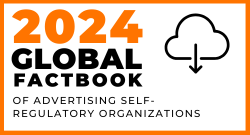Standards foster transparency of influencer marketing
Brands increasingly work with social media influencers to promote their products or services to a targeted audience of consumers. Research by the World Federation of Advertisers (WFA) shows that global spending on influencer marketing is expected increase by 65% from mid-2018 to mid-2019. But such growth is conditional upon influencers meeting certain criteria in terms of transparency and credibility.
Social media influencers are typically individuals with a large number of followers on social media such as YouTube, Instagram, Facebook, or Twitter. Because they tend to gather around them individuals with similar interests, influencers have the potential to affect the purchase decisions of their followers, hence their attractiveness to brands looking to promote a particular product or service.
Content posted by social influencers online is typically considered as an advertisement when the influencer receives a payment or another type of reward (e.g. in the form of free products) from the brand in exchange for allowing the brand to review and approve the content of the post.
In such cases, advertising standards are there to ensure that ads posted by influencers are clearly labelled as such. This label can take various forms, such as an oral or a written disclosure, for example by using the hashtag #ad in a post. In any case, consumers should be able to identify when a post by a social influencer is an ad, and when it is not.
This principle of transparent disclosure of ads by social influencers applies in different markets around the globe. Individual countries however have developed their own approach to the issue: some consider that influencer marketing is covered by existing Codes, guidelines or regulations, while others have adopted or are currently discussing special guidelines and programs to ensure that the disclosure principle is known, understood and properly implemented by online communities.
Because they work to develop and/or implement locally-relevant guidelines for influencers, ICAS members play a key role in promoting transparency and consumer trust in advertising on social media. To highlight these efforts, ICAS is providing an online overview of existing (self-)regulatory Guidelines in those markets covered by the ICAS network of Self-Regulatory Organizations (SROs).
Where they exist, specific influencer guidelines are generally consistent with with the ICC Marketing Code. It should be noted that some markets are still in the process of adopting specific guidelines while others may consider that their existing Standards already provide sufficient guidance for influencers. ICAS will endeavor to update the overview on a regular basis.
At the European level, the European Advertising Standards Alliance (EASA), ICAS’ sister organization, has gone one step further by developing a Best Practice Recommendation on Influencer Marketing. This recommendation showcases existing national practices on influencer marketing and provides an aggregate analysis of the main criteria used in self-regulatory guidelines across Europe. It therefore constitutes a very useful guidance for those SROs looking to introduce new influencer marketing guidelines in their market and advertising practitioners interested in responsible influencer marketing standards. The EASA Best Practice Recommendation on Influencer Marketing will soon be available on the EASA website.
For more information on social influencer guidelines worldwide, please contact the ICAS Secretariat or the ICAS member in the relevant market.

